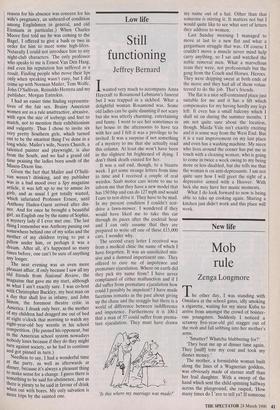THE climate is idyllic — warm, dry sum- mers, cool
but not cold winters. Dramatic mountains sweep down to a sea as blue as the Mediterranean. Between the moun- tains and the sea the vines grow, in perfect conditions. The grapes reach extraordinary concentrations of ripeness, and make some of the world's longest-living sweet wines. Viticulture in this favoured part of the world almost certainly goes back to the Romans, but it was in 1829 that a viticultu- ral research station was established, perhaps the most advanced of its time anywhere. By the end of the last century, a variety of dessert and fortified wines, some modelled on those of classic European areas, others original in style, was being produced for the Tsars at Massandra, near Yalta, on the south Crimean coast.
One of the many extraordinary things to emerge from Sotheby's sale of wines from the Massandra Collection, to be held in London on 2 April, is that the winery (and this is the right word for the large, purpose- built complex) produces wine to this day. The mystery is why, and for whom. The orders to preserve and keep the winery in operation came from the top. After the Red Army took control of the Crimea in 1920, Stalin ordered that all the wine found in the Tsars' other palaces should be shipped to Massan- dra. In 1941, as the Germans threatened to invade, the entire contents in bottle were removed to three safe places deep inside the Soviet Union.
-z---4111
la
gligHTEPIR
tk-.7j (1) /47 fl
The Massandra sale
the national treasure. He explained that he had an export licence. If you have an export licence, then all is well, the Ministry is supposed to have answered.
Now all this is clearly good publicity for glasnost and also for Sotheby's, but the ultimate question is about the quality of the wines, and who, if anyone, will buy them. The first thing which struck me at a small pre-sale tasting of six selected vin- tages was the sweetness of the Russian tooth. When Russia was one of the largest markets for champagne, the champagne exported there by Veuve Clicquot and Louis Roederer contained up to 20 per cent of sweet liqueur de tirage. The 1945 South Coast Red Port (an unromantic name which suggests antipodean origin) was the colour of an old tawny, and had a slightly cheesy nose more like Malmsey than port. (To be fair David Molyneux- Berry said this was a poor bottle.) To taste this was heavy, sweet, powerful — very well preserved but above all sweet. The suggested auction price of £30-£60 a bottle seems a little steep. More attractive was the golden Cabernet Sauvignon White Port of 1936, with a fleshy nose like Amoroso sherry, pleasantly nutty on the palate and with just enough fruit acidity to balance the sweetness.


















































 Previous page
Previous page